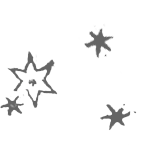Music
Music
Exhibit items on the subject of music.
Exhibit Items
|
Principles of Geometry Dürer, Albrecht (1535) This landmark work by Albrecht Dürer presents several variations on the technique of “Alberti’s window.” Here the artist is creating a drawing of a lute with true perspective by means of a string drawn from the object, through the canvas window, to the vanishing point on the wall. |
 |
|
|
The Practice of Perspective Sirigatti, Lorenzo (1596) This beautiful work by Sirigatti, published in 1596, brings the tradition of perspective drawing up to Galileo’s time. Sirigatti was a member of the Academy of Drawing (Accademia del Disegno), a school for artists and engineers where Galileo studied as a young man. |
 |
|
| 1 |
The Marriage of Philology and Mercury Capella, Martianus (1499) Capella described the seven liberal arts. The first three are grammar, logic or dialectic, and rhetoric. Then come the mathematical sciences, geometry and arithmetic. Geometrical circles in motion make astronomy. Numbers in motion make music. |
 |
| 1 |
The Nuremberg Chronicle Schedel, Hartmann (1493) In the most lavishly illustrated book of the 1400’s, solid spheres ceaselessly turn, carrying the planets and filling the universe between the outermost heaven and the central Earth. |
 |
| 1 |
Dialogue on Ancient and Modern Music Galilei, Vincenzo (1581) From childhood, Galileo’s world was shaped by music. His father, Vincenzo Galilei, was a prominent music theorist who contributed to the development of Italian opera. This book, Vincenzo’s major work, was acquired in Fall 2014 with assistance from the Athletics Department. |
 |
| 2 |
On the Two Worlds, namely the Major and the Minor Fludd, Robert (1617-1621) For Robert Fludd, the universe is a monochord, its physical structure unintelligible without an understanding of music. In another section of the book, Fludd depicts the universe as a Temple of Music. |
 |
| 2 |
Harmony of the Universe Kepler, Johann (1619) In this work, Kepler integrated theoretical astronomy and music, showing that the motions of the planets employ the same numerical ratios as the most harmonious musical scales. |
 |
| 3 |
Universal Music-Making Kircher, Athanasius (1650) This 17th-century treatise on music shows a mechanical, water-driven organ. Water enters on the right side of the diagram, turning a gear mechanism that animates a cylinder roll and keyboard. Musical notation cut into the cylinder roll determines the keys depressed for any given time. |
|
| 4 |
Harmonics Ptolemy, Claudius (1682) Ptolemy’s influential music theory was related to his astronomy. Through sight, we apprehend beauty through astronomy. Through hearing, we apprehend beauty through harmony. |
 |
| 5 |
Memoir and Correspondence Herschel, Caroline (1876) The 19th century saw an unprecedented expansion of known objects in the universe. William and Caroline Herschel conducted a comprehensive search of northern skies with telescopes powerful enough to resolve many nebulae into star clusters. |
 |
| 10 |
Celebrated Questions on the Book of Genesis Marsenne, Marin (1623) Commentaries on Genesis often served as scientific treatises or encyclopedias. Mersenne, a French theologian, astronomer, music theorist and scientific correspondent, addressed a wide range of issues in cosmology in this commentary. |





